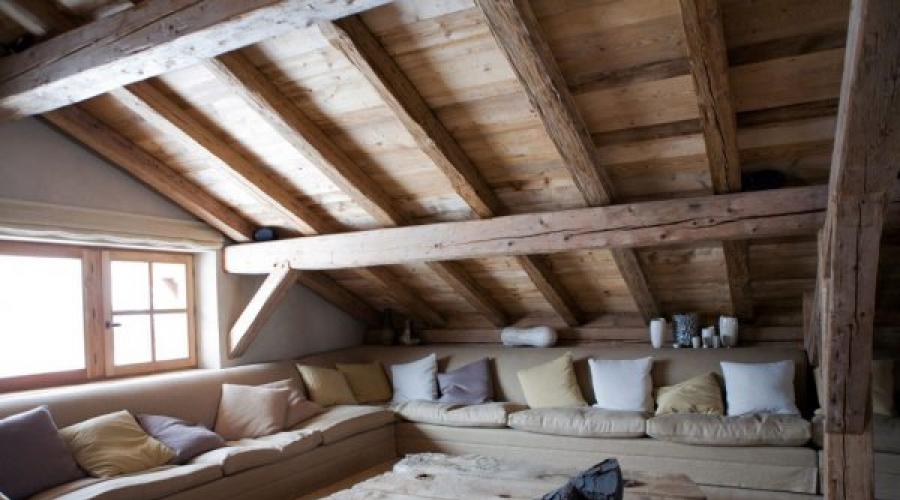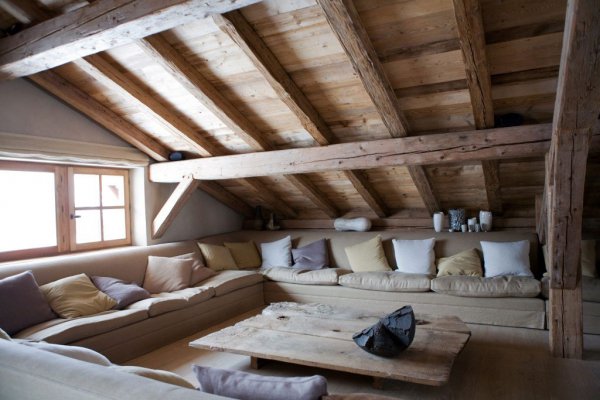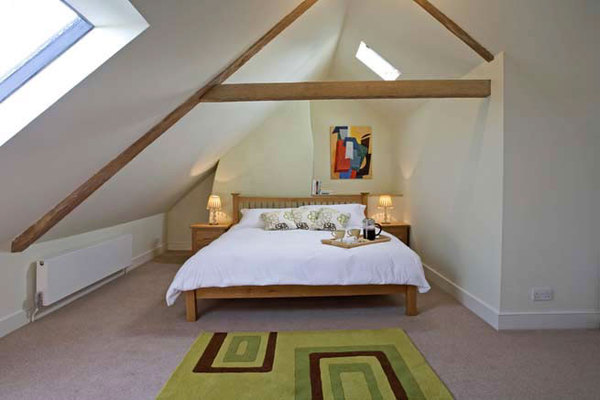Attic and attic, what's the difference

Read also
Attic, attic - is it the same thing, or is there a difference? Let's see what the difference is.
General: both names refer to the room under the roof itself. The first was named after the French architect Mansart, who once (17th century) began to equip rooms for servants on unnecessary areas under the roof of the house.
Attic- a borrowed word, its roots in Turkish. In Hungary, this is what they call a sentry box on four pillars, in our country, this term means an open room, often uninhabited, under a roof.
Arrangement of the attic space for a long time was minimal. It was insulated, led light, maximum for economic purposes. There were several reasons:
We have a cold climate, without heating the attic can only be used 3-4 months a year. In the heat it is too stuffy there, in the autumn-winter period it is cold.
For a long time, horticultural construction was regulated by building height; it was impossible to build houses with 2 floors. Permission for such luxurious construction appeared only in the 70-80s of the last century. Of course, even before that time, many allocated rooms for the night in the attic, but they tried to arrange it under unfinished construction, storage places, and so on.
In old dachas and village houses, such attics are still alive. The floor is covered with slag, a minimum of lighting, a couple of tiny rooms, without doors, a chimney from the main furnace, that's all the decoration. All decoration - cheap paper wallpaper, yes rugs. The decoration is an old bed and a nightstand. Temporary shelter for summer holidays.
With the advent of new building materials on our market, or rather, information on how to build new roofs, the time has come for well-appointed attics.

So what is the difference between an attic and an attic?
In one: the arrangement of non-residential premises for residential. With all the ensuing consequences, which many do not even think about.
Turning an attic into a living space increases the usable, taxable area of your home. There will be a tax on the attic. We will talk about it separately.
With the advent of fashion for attic rooms, the design of the roof has changed, it has become gable, which increases the cubic capacity of the attic space. When planning living rooms under the roof, special attention should be paid to the heat and waterproofing of the room. Too large temperature fluctuations are present here. Roof heating in warm weather, night temperature drops make the roof cry. With an unsuccessful choice of heat-insulating material, violation of construction technology, lack of good ventilation, rain can spill inside the house.
Top tip: collecting useful information is a must before construction. Sellers in the store are good, but their task is to sell goods. Draw useful knowledge by reading reviews, interviewing neighbors, study the climatic features of the area where your dacha is located.
